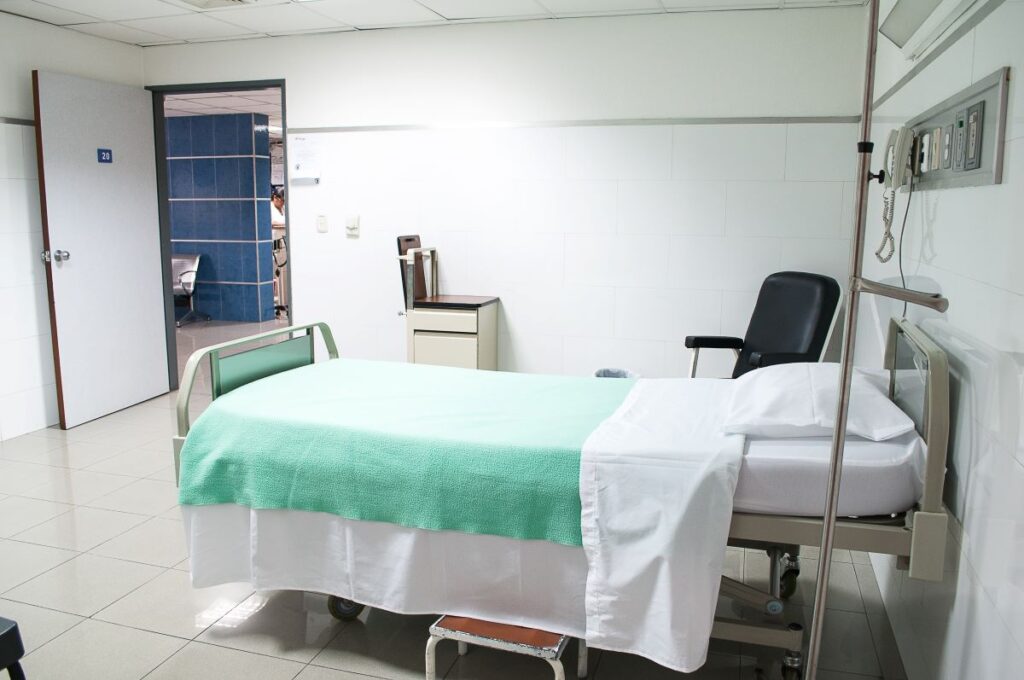
Estimates suggest there were 281 million migrants worldwide in 2020, a number which continues to grow (International Organisation for Migration, 2020). Previous research has found that migrants are on average twice as likely to develop a psychotic disorder compared to non-migrants (Selten et al., 2020). Once diagnosed with psychosis, migrants have an increased risk of compulsory admission to hospital (Terhune et al., 2020, blogged here by Zuva Dengu).
Whilst such research suggests that inequalities in psychiatric health and healthcare exist by migrant status, we have a lot to learn. Little research has actually looked at outcomes for migrants with psychosis (Maguire et al., 2020). We know that there is a vast gap of 10-25 years in life expectancy for people with psychotic disorders compared to the general population (Hayes et al., 2017), but it is unclear whether migrants face similar mortality-gaps to people without a history of migration with psychosis.
A recent study by Katsampa & Akther et al. aimed to understand inequalities in multiple outcomes in individuals with first-episode psychosis by migrant status in Sweden. Specifically, the study aimed to see whether:
- Migrants with psychosis face similar mortality-gaps to their Swedish-born counterparts
- Psychiatric service use for people with first-episode psychosis differs by migrant status.

Previous research has found that migrants are twice as likely to develop a psychotic disorder compared to the general population and that those with psychosis have on average a reduced life expectancy of 10-25 years.
Methods
This was a retrospective population-based study using data from linked national registers in Sweden.
The cohort included individuals:
- Born between 1984 and 1997
- Alive and living in Sweden on their 14th birthday, or date of arrival in Sweden (if later)
- Born to 2 Swedish-born parents, or a migrant arriving in Sweden from January 1st, 1998
- Migrants from regions-of-origin with greater than 1,000 refugees (Asia, Eastern Europe including Russia, the Middle-East & North Africa, Sub-Saharan Africa).
The cohort excluded:
- Individuals born to 1 Swedish-born parent and 1 migrant parent
- Migrants who arrived before 1998
- Undocumented or temporary migrants.
Migrant status was categorised as:
- Born in Sweden to 2 Swedish-born parents (non-migrants)
- Refugee migrants
- Non-refugee migrants.
The whole sample (including people with and without a diagnosis of psychosis) was followed to determine all-cause and cause-specific mortality. In the mortality analysis, the primary exposure was a diagnosis of psychotic disorder. The authors then examined whether all-cause or cause-specific mortality gaps between participants with and without psychosis differed by migrant status or region-of-origin. Region-of-origin was also used to group participants according to ‘visible’ minority status (for example, if from Africa, the Middle East and Asia).
For participants diagnosed with a first episode of psychotic disorder, the study examined admission type at first presentation (inpatient or outpatient) for psychotic disorder by migrant status. For those who had an inpatient admission at first presentation, length of inpatient stay in days and time-to-readmission was examined by migrant status.
Competing risk regression and Cox proportional hazards models were fitted, both unadjusted and adjusted for sex, age, disposable income, and urban residence. Crude mortality rates were also presented.
Results
The total sample comprised 1,335,192 participants, including 133,362 non-refugee migrants and 24,117 refugees.
The key findings were:
- Mortality rates were 6.70 times higher (95% CI 5.93 to 7.58) for participants diagnosed with a psychotic disorder compared with those not diagnosed with a psychotic disorder
- This mortality gap did not significantly vary by migrant status or region-of-origin for both all-cause and cause-specific mortality
- Although there was no strong evidence for mortality differences between groups, refugees had the highest crude mortality rates (303.5 deaths per 100 000 people per year)
- For participants with a psychotic disorder, migrants were 40% more likely to receive inpatient rather than outpatient care compared to non-migrants. This risk was particularly high for migrants from Sub-Saharan Africa or Asia
- There were no differences in length of stay for inpatients by migrant status or region-of-origin, though there was weak evidence of longer inpatient stays for refugees
- Sub-Saharan African migrants were readmitted with psychosis more quickly than non-migrant patients.

This study found that migrants were 40% more likely than non-migrants to be hospitalised at first diagnosis of a psychosis episode, rather than given community care.
Conclusions
According to this study of young residents in Sweden:
- The mortality gap between people with and without psychosis persisted irrespective of migrant status or region-of-origin
- People of migrant status were not at greater risk of mortality
- Though refugees had the highest crude mortality rates, there was no strong evidence for difference between groups
- Migrants were more likely to receive an inpatient admission at first diagnosis of psychosis, with the greatest risk for migrants from Sub-Saharan Africa and Asia
- This study did not find differences in inpatient length of stay by migrant status.

Though people of migrant status were not found to have greater risk of mortality, refugees had moderately increased crude mortality in comparison to non-migrants.
Strengths and limitations
This was a methodologically rigorous study which makes an important contribution to our understanding of mortality and psychiatric service use outcomes among migrants with psychosis. The study utilises an existing national dataset with reliable coverage of patients with psychosis in Sweden. The study addresses gaps in the literature (Maguire et al., 2020) and is ambitious by looking at multiple outcomes for migrants with psychosis in a single cohort. This study also went beyond examining migrant status alone by also looking at differences by region-of-origin.
However, there is no such thing as a perfect study. The authors acknowledge that, despite the large sample size, insufficient power may have been an issue in detecting differences between migrants and non-migrants with psychosis.
Another limitation of this study is the lack of granular detail in the Swedish registers. Migrant groups themselves reflect much heterogeneity: though the authors were able to distinguish between refugee and non-refugee migrants, these groups remain broad and they will include people with very different migration experiences (Schofield et al., 2017). Ethnicity also isn’t recorded in the registers, so region-of-origin is used as a proxy for ‘visible’ minority status. As described in Zuva Dengu’s blog , region-of-origin may not necessarily reflect the individual’s ethnicity as there is diversity within geographic regions, therefore this is an imprecise proxy for ‘visible’ minority status.
I would also add that the population in this study focused on individuals with first-episode psychosis from young age groups (up to 33-years old). This age-limit means this study doesn’t tell us anything about outcomes for older migrants with psychosis. Recent research in the general population suggests that mortality differences by migrant status may fluctuate over the life course and inequalities may only become evident later in life (Guillot et al., 2018; Wallace & Wilson, 2021). We therefore cannot generalise these findings to older migrants with psychosis.
Lastly, the Swedish case registers only include people granted permanent residency. This means the study did not include undocumented migrants, who may have different health outcomes compared to documented migrants (Gimeno-Feliu et al., 2020,).

This was a rigorous study, but the young age of the sample means it may not provide the whole picture on mortality for migrants with psychosis.
Implications for practice
The mortality gap found in this young cohort of patients with psychosis reinforces the need to address the causes (and the causes of the causes!) of premature mortality in people with psychosis.
Perhaps the most striking findings from this study pertain to the inequalities experienced by minorities with psychosis in psychiatric healthcare. Migrants were more likely to receive inpatient care than non-migrants, particularly for migrants of ‘visible’ ethnic minorities. This is on top of previous evidence that these migrants are at risk of more coercive routes into inpatient care (Terhune et al., 2020). I agree with the authors that this highlights the importance of transforming services to offer “accessible, destigmatized, and timely treatment for all”. Further investigations are needed into the reasons why migrants are more likely to be admitted as inpatients, including the role of delayed treatment, discrimination, and social exclusion.
To end on a quote from Professor Sir Michael Marmot (2016), “one way to treat people with dignity is to understand and respond to health problems caused by their migrant status.” My hope is that we can use research such as this to promote social change and action surrounding the health of migrants with mental illness.

Efforts are needed to transform services so migrants with psychosis can access destigmatized and timely care.
Statement of interests
Natasha knows one of the first authors (DK) informally from studying on the same postgraduate course, but had no input to this specific piece of work. Natasha is currently funded by the Economic and Social Research Council (ESRC) for her PhD research on health inequalities for socially excluded groups – views expressed are that of the author and not necessarily that of the ESRC.
Links
Primary paper
Dafni Katsampa, Syeda F Akther, Anna-Clara Hollander, Henrik Dal, Christina Dalman, James B Kirkbride (2021) Inequalities in Psychiatric Service Use and Mortality by Migrant Status Following a First Diagnosis of Psychotic Disorder: A Swedish Cohort Study of 1.3M People, Schizophrenia Bulletin Open, Volume 2, Issue 1, January 2021, sgab009, https://doi.org/10.1093/schizbullopen/sgab009
Other references
Gimeno-Feliu, L. A., Pastor-Sanz, M., Poblador-Plou, B., Calderón-Larrañaga, A., Díaz, E., & Prados-Torres, A. (2020). Multimorbidity and chronic diseases among undocumented migrants: evidence to contradict the myths. International journal for equity in health, 19(1), 1-9.
Guillot, M., Khlat, M., Elo, I., Solignac, M., & Wallace, M. (2018). Understanding age variations in the migrant mortality advantage: An international comparative perspective. PLoS One, 13(6), e0199669.
Hayes, J. F., Marston, L., Walters, K., King, M. B., & Osborn, D. P. (2017). Mortality gap for people with bipolar disorder and schizophrenia: UK-based cohort study 2000–2014. The British Journal of Psychiatry, 211(3), 175-181.
Hollander, A. C., Pitman, A., Sjöqvist, H., Lewis, G., Magnusson, C., Kirkbride, J. B., & Dalman, C. (2020). Suicide risk among refugees compared with non-refugee migrants and the Swedish-born majority population. The British Journal of Psychiatry, 217(6), 686-692.
International Organization for Migration. United Nations.: World Migration Report 2020. In: IOM world migration report series. Geneva: International Organization for Migration: United Nations; 2020. p. 364.
Maguire, J., Sizer, H., Mifsud, N., & O’Donoghue, B. (2020). Outcomes for migrants with a first episode of psychosis: A systematic review. Schizophrenia research.
Marmot, M. (2016). Society and health of migrants. European journal of epidemiology, 31(7), 639-641.
Selten, J. P., Van Der Ven, E., & Termorshuizen, F. (2020). Migration and psychosis: a meta-analysis of incidence studies. Psychological medicine, 50(2), 303-313.
Terhune, J., Dykxhoorn, J., Mackay, E., Hollander, A. C., Kirkbride, J. B., & Dalman, C. (2020). Migrant status and risk of compulsory admission at first diagnosis of psychotic disorder: a population-based cohort study in Sweden. Psychological Medicine, 1-10.
Wallace, M., & Wilson, B. (2021). Age variations and population over-coverage: Is low mortality among migrants merely a data artefact?. Population Studies, 1-18.
Photo credits
- Photo by Aron Visuals on Unsplash
- Photo by Martha Dominguez de Gouveia on Unsplash
- Photo by Jungwoo Hong on Unsplash
- Photo by Martin Reisch on Unsplash
- Photo by Barbara Zandoval on Unsplash
